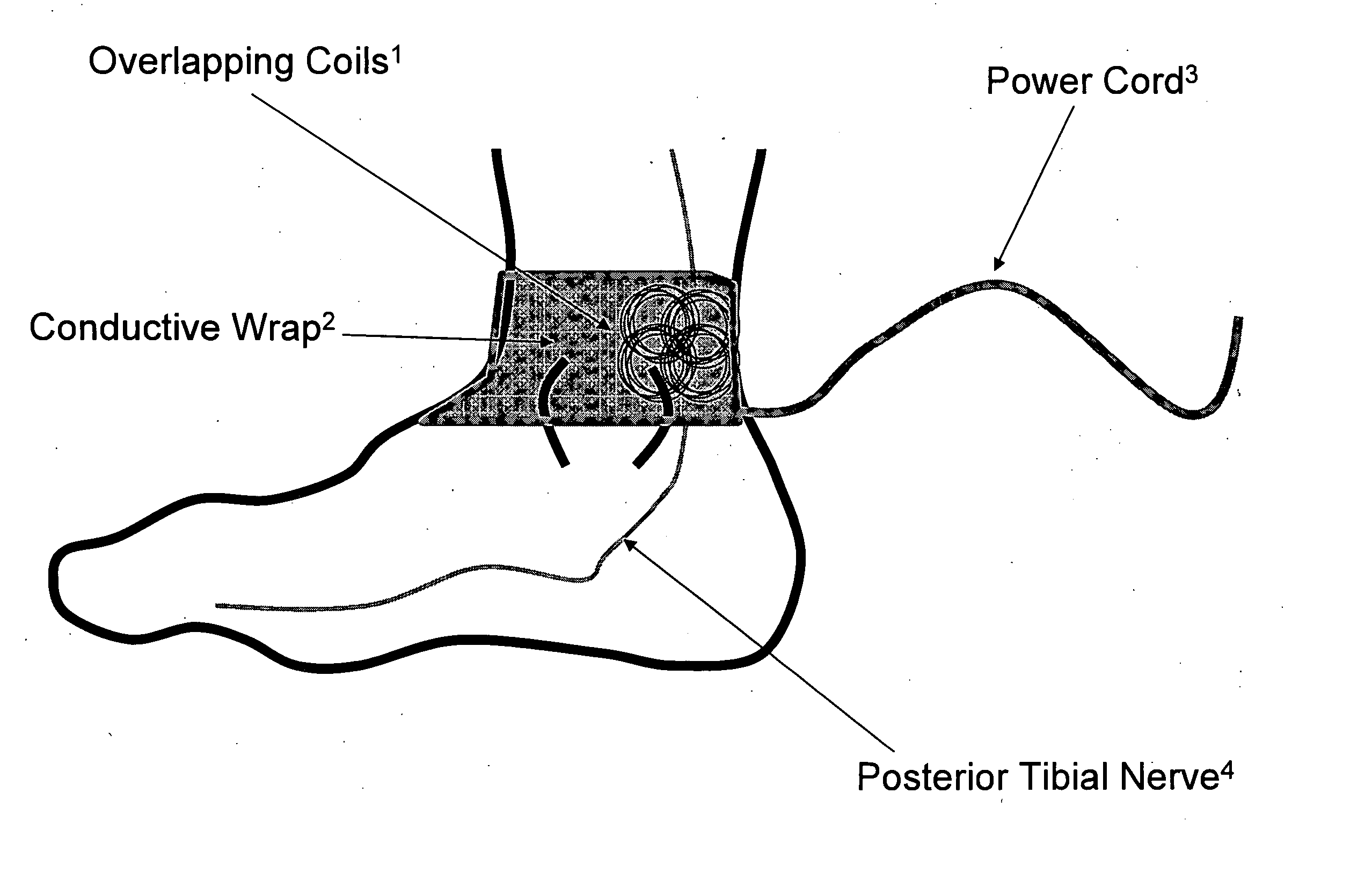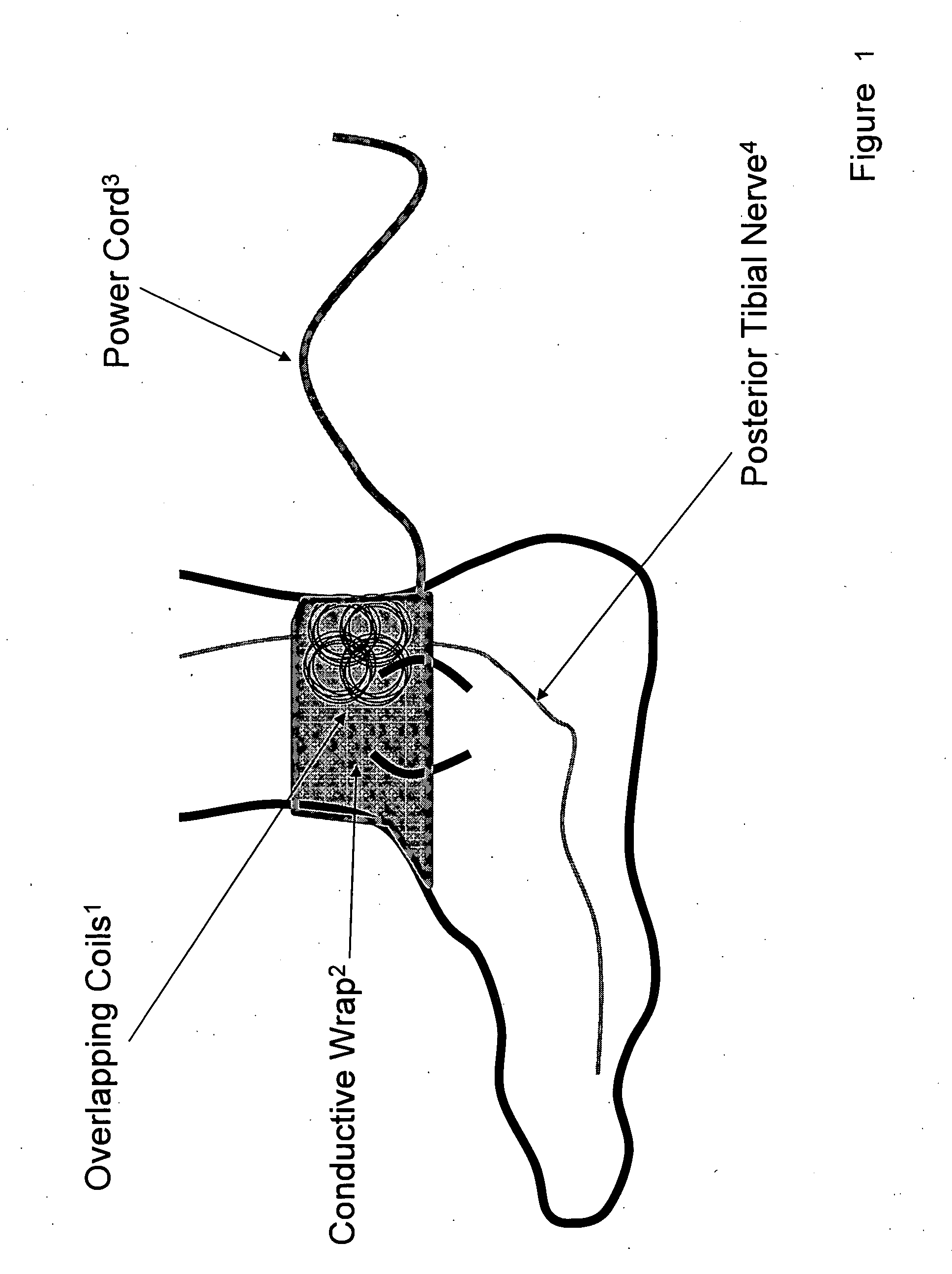Method and apparatus for low frequency induction therapy for the treatment of urinary incontinence and overactive bladder
a low frequency induction and urinary incontinence technology, applied in electrotherapy, therapy, etc., can solve the problems of not considering the use of any specific component, relatively invasive, and not providing pulsed electromagnetic stimulation, etc., to achieve convenient therapeutic intervention targeting, ensure accurate targeting of the tibial nerve, and facilitate use and use. user-friendly
- Summary
- Abstract
- Description
- Claims
- Application Information
AI Technical Summary
Benefits of technology
Problems solved by technology
Method used
Image
Examples
Embodiment Construction
[0033] Device: Low Frequency Induction Therapy [0034] Indications for Use: [0035] 1) Prevention of urinary incontinence (UI) [0036] 2) Prevention of overactive bladder (OAB)
Methods for Use: [0037] 1) A patient with a condition of UI of OAB, for example, will place a conductive wrap disposed in a flexible material over the region of the ankle (or alternatively the knee). [0038] 2) The logic controller component of the device will be activated for the directed duration of use, 15-30 minutes in the ideal embodiment. The logic controller may be powered either by a portable power source (e.g. battery) or a fixed power source (e.g. traditional wall outlet). [0039] 3) The conductive wrap will be removed from the body when therapeutic stimulation is not being delivered and reapplied as indicated, on a daily basis in the ideal embodiment.
PUM
 Login to View More
Login to View More Abstract
Description
Claims
Application Information
 Login to View More
Login to View More - R&D
- Intellectual Property
- Life Sciences
- Materials
- Tech Scout
- Unparalleled Data Quality
- Higher Quality Content
- 60% Fewer Hallucinations
Browse by: Latest US Patents, China's latest patents, Technical Efficacy Thesaurus, Application Domain, Technology Topic, Popular Technical Reports.
© 2025 PatSnap. All rights reserved.Legal|Privacy policy|Modern Slavery Act Transparency Statement|Sitemap|About US| Contact US: help@patsnap.com



